1. (…Even the Ocean’s Apex Predator Isn’t Invincible!)
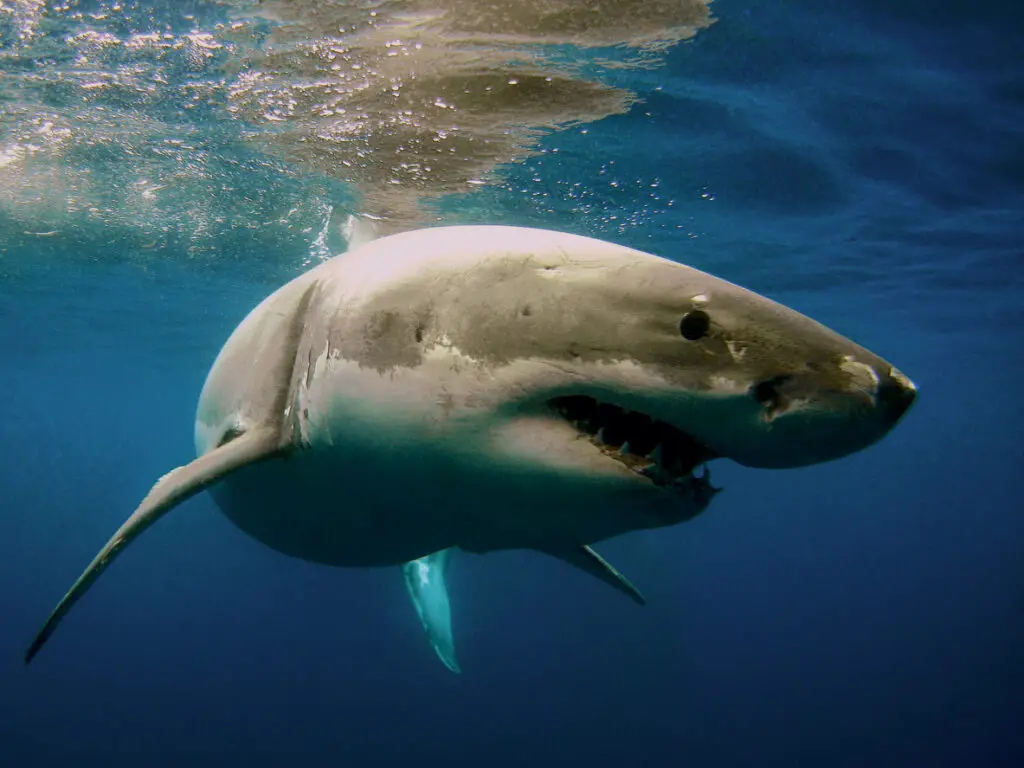
The once-mighty great white shark population is teetering on the brink of collapse. Recent estimates suggest a mere 3,000 to 5,000 individuals remain globally, a far cry from their former abundance. A study published in Nature Climate Change delivers a chilling warning: for every 1°C increase in ocean temperature, shark populations could plummet by a staggering 10%. In some regions, the situation is even more dire, with populations facing a catastrophic 40% drop if temperatures rise by 5°C.
This dramatic decline isn’t just a numbers game – it’s a race against time for the ocean’s apex predator. The International Union for Conservation of Nature (IUCN) has listed the great white as “Vulnerable,” just one step away from “Endangered.” Dr. Nicholas Dulvy of Simon Fraser University paints a grim picture, warning that if current warming trends continue, we could witness a catastrophic collapse of great white populations in some regions within the next 50 years. The clock is ticking for these majestic creatures, and the consequences of their disappearance could ripple through entire marine ecosystems.
2. Climate Change
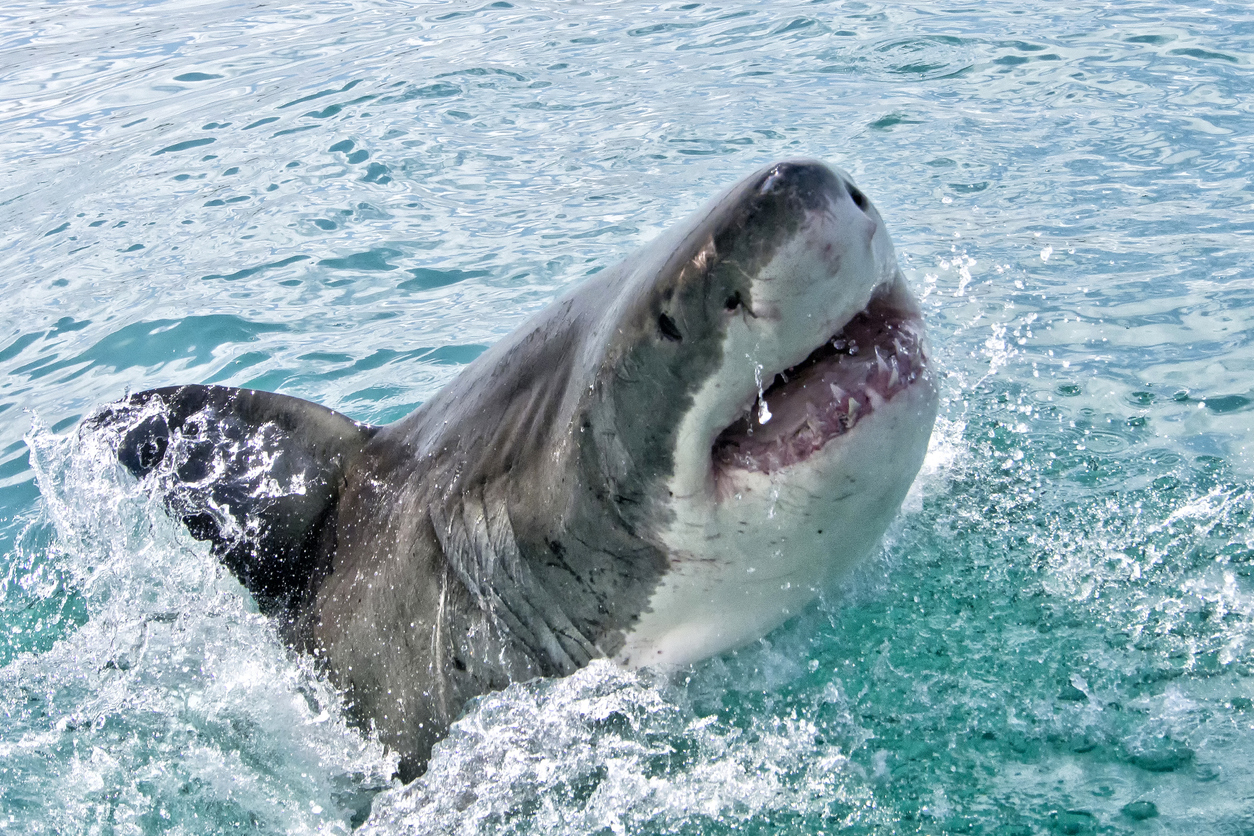
As the planet’s fever rises, great white sharks find themselves caught in a deadly heat trap. Ocean temperatures are soaring at an unprecedented rate, with some regions experiencing a staggering 0.2°C increase per decade. This seemingly small change is wreaking havoc on the delicate balance of marine ecosystems, forcing these apex predators to adapt or perish.
A groundbreaking study published in Scientific Reports reveals that rising temperatures are altering the sharks’ traditional hunting grounds. Researchers tracked 14 great whites off the coast of California and found that warmer waters were pushing their prey northward, forcing the sharks to expend precious energy following their food source. Dr. Barbara Block, a marine biologist at Stanford University, warns, “We’re witnessing a fundamental shift in the ocean’s food web. As temperatures continue to rise, we may see great whites venturing into uncharted territories, potentially leading to increased human-shark interactions and disrupting entire ecosystems.”
3. Fishing Industry
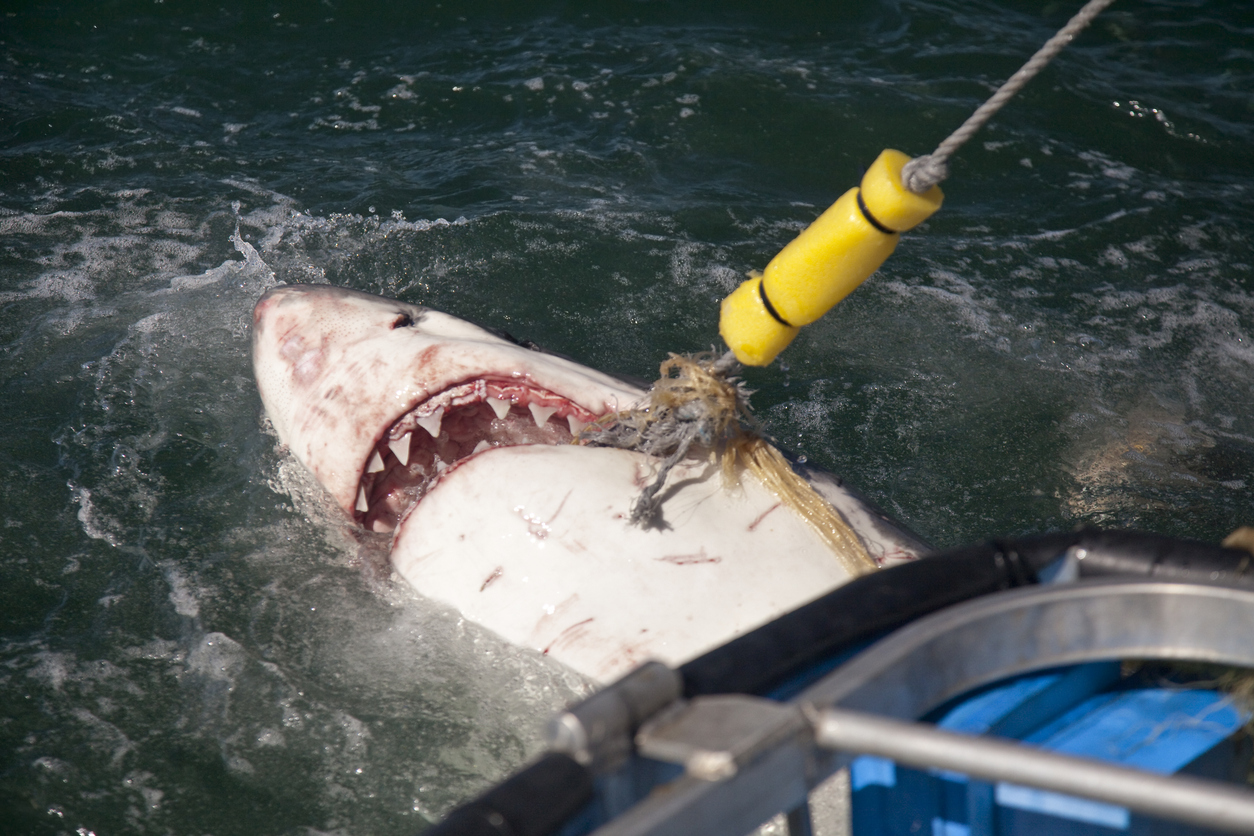
The relentless pursuit of seafood is casting a deadly net over great white shark populations. Industrial fishing fleets, armed with state-of-the-art technology, are inadvertently snaring these majestic predators as bycatch. A shocking report from the National Oceanic and Atmospheric Administration (NOAA) reveals that up to 273,000 sharks of various species are caught as bycatch in the U.S. Atlantic tuna and swordfish longline fisheries alone, with great whites among the unintended victims.
Dr. Boris Worm, a marine ecologist at Dalhousie University, paints a grim picture: “Every year, millions of sharks fall victim to fishing gear not meant for them. It’s like a minefield in the ocean.” The impact extends beyond immediate mortality. Survivors often bear horrific injuries, compromising their ability to hunt and reproduce. A study in the journal Marine Policy found that even catch-and-release practices can be lethal, with post-release mortality rates reaching up to 40% for some shark species. As fishing pressure intensifies, the future of great whites hangs precariously in the balance.
4. Orca Predation
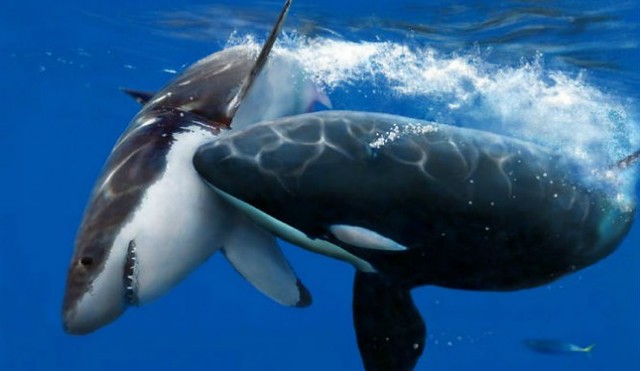
In a shocking turn of events, the ocean’s apex predator has become prey. Orcas, also known as killer whales, have developed a taste for great white shark liver – a nutrient-rich organ that can weigh up to 600 pounds. Marine biologist Alison Towner and her team in Mossel Bay, South Africa, documented a chilling encounter where an orca named Starboard hunted and consumed a 2.5-meter juvenile great white in mere minutes.
This isn’t an isolated incident. A study published in the African Journal of Marine Science reveals that the mere presence of orcas can drive great whites away from their traditional hunting grounds for months at a time. Dr. Salvador Jorgensen, a researcher at the Monterey Bay Aquarium, explains, “We’re witnessing a radical shift in the ocean’s power dynamics. Orcas have essentially usurped great whites as the top predator in certain areas.” This forced exodus disrupts entire ecosystems, as smaller predators flourish in the absence of great whites, potentially leading to cascading effects throughout the food web.
5. Deep-Sea Rivals
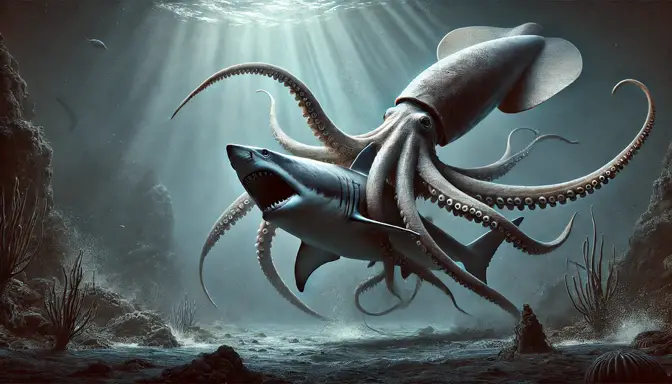
The inky depths of the ocean conceal monstrous creatures that even great white sharks fear to face. Colossal squid, with tentacles bristling with razor-sharp hooks, engage these predators in epic battles that often leave both combatants scarred. Marine biologist Dr. Robert Hueter of the Mote Marine Laboratory notes, “The scars we see on some great whites suggest violent encounters with giant squid. These battles are like clash of the titans, happening in the darkness where we can’t observe them.”
But an even more formidable foe lurks in the abyss – the sperm whale. These leviathans, armed with massive teeth and powerful tails, have been known to defend themselves against great whites with bone-crushing force. A study in the journal Marine Mammal Science documented an encounter where a pod of sperm whales fended off a group of great whites, using their massive bodies as battering rams. As climate change forces great whites into deeper waters in search of prey, these confrontations may become more frequent, adding another layer of danger to the sharks’ already perilous existence.
6. Habitat Loss
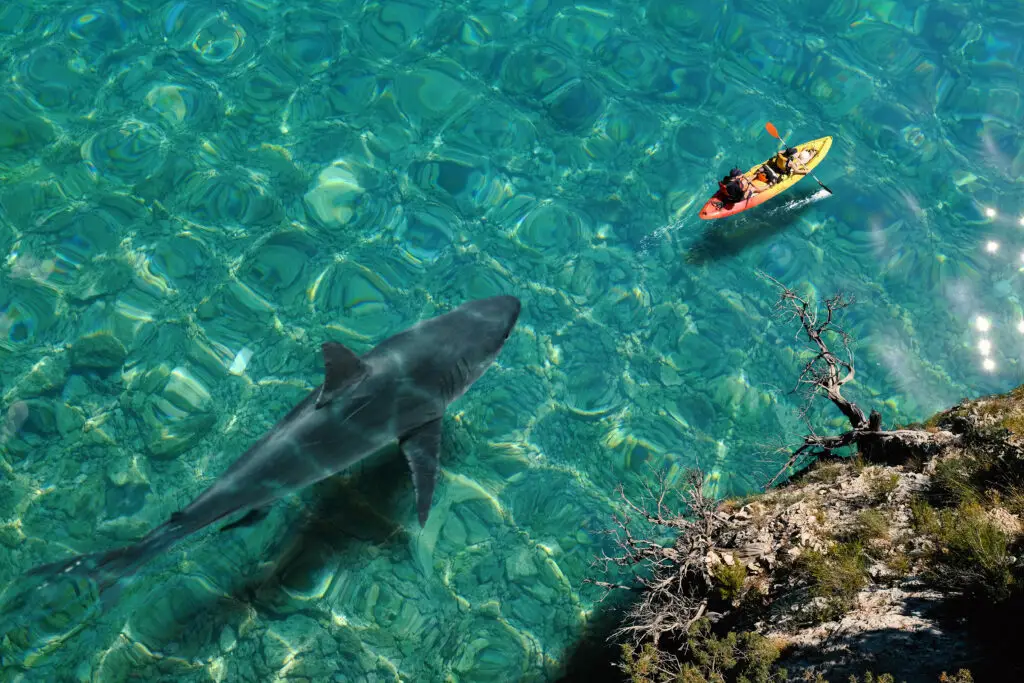
The relentless march of coastal development is erasing crucial great white shark habitats at an alarming rate. A study published in the journal Frontiers in Marine Science reveals that up to 40% of the world’s coastal wetlands have vanished in the past century, with the rate of loss accelerating. These areas serve as vital nurseries for great white pups and their prey species.
Dr. Christopher Lowe of California State University, Long Beach, warns of the dire consequences: “We’re witnessing the systematic destruction of great white shark nurseries. Without these safe havens, juvenile sharks are exposed to increased predation and human interactions.” The impact extends beyond the sharks themselves. A single great white can travel up to 12,400 miles in a year, playing a crucial role in connecting distant marine ecosystems. As their habitats shrink, the delicate balance of entire ocean food webs hangs in the balance.
7. Shark Finning
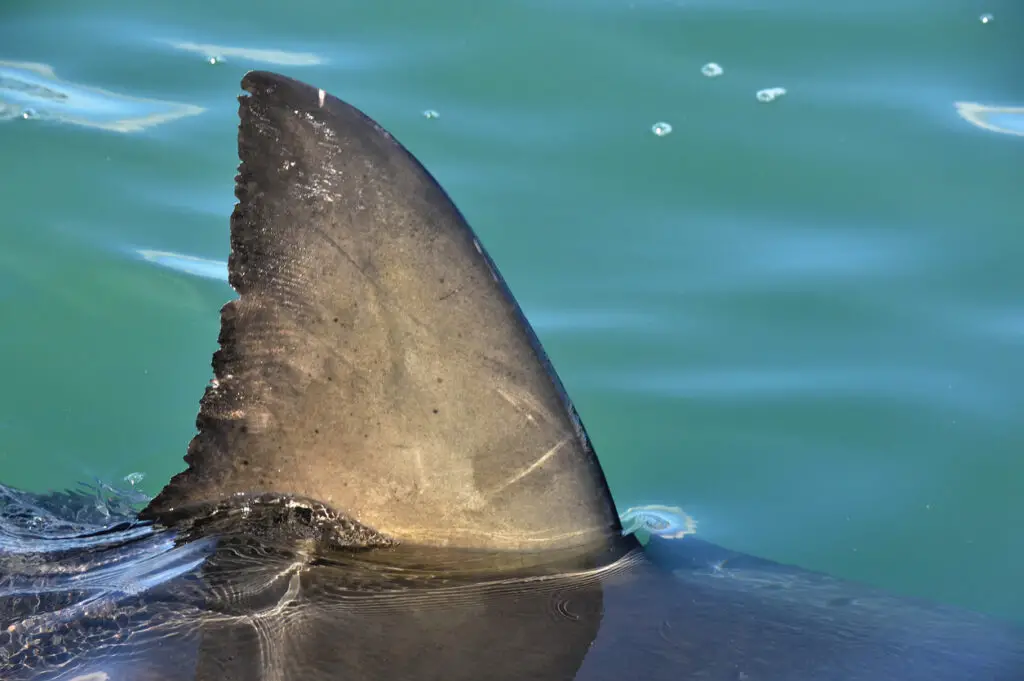
In a grotesque perversion of culinary tradition, great white sharks are falling victim to the insatiable appetite for shark fin soup. This barbaric practice, driven by misguided beliefs in the fins’ medicinal properties, is pushing these majestic creatures to the brink of extinction. The International Union for Conservation of Nature (IUCN) estimates that up to 73 million sharks are killed annually for their fins, with great whites among the most prized and endangered targets.
Dr. Demian Chapman, a marine scientist at Florida International University, reveals the shocking truth behind this trade: “A single great white shark fin can fetch up to $50,000 on the black market. This creates a powerful incentive for poachers, even in protected areas.” The cruelty doesn’t end with the harvest. Many sharks are finned alive and thrown back into the ocean, left to sink and suffocate in a slow, agonizing death. As demand for this status symbol continues to grow, time is running out for these ocean giants.
8. Electromagnetic Disruption
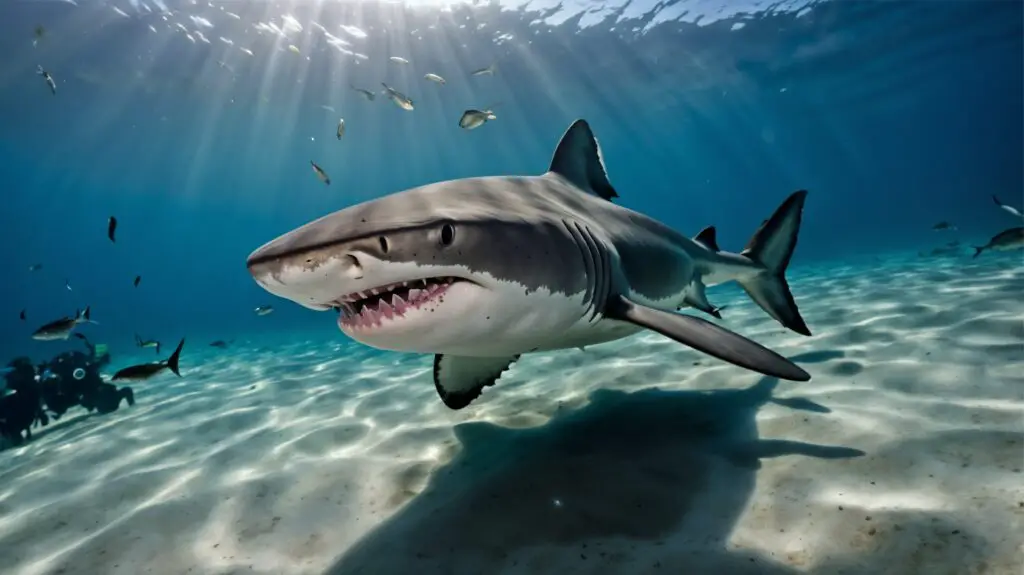
Beneath the waves, an invisible menace is wreaking havoc on great white sharks’ finely tuned senses. The proliferation of undersea cables and offshore wind farms is creating a web of electromagnetic fields that interfere with the sharks’ ability to navigate and hunt. Dr. David Jacoby of the Zoological Society of London explains, “Sharks use the Earth’s magnetic field like a GPS. These artificial electromagnetic fields are essentially creating a sensory smog in the ocean.”
A groundbreaking study published in Current Biology found that electromagnetic fields can alter shark behavior, causing them to spend more time near the source of the disruption. This not only impacts their hunting efficiency but also increases the risk of entanglement in fishing gear. As our reliance on undersea technology grows, great whites find themselves navigating an increasingly confusing and dangerous underwater landscape.
9. Noise Pollution
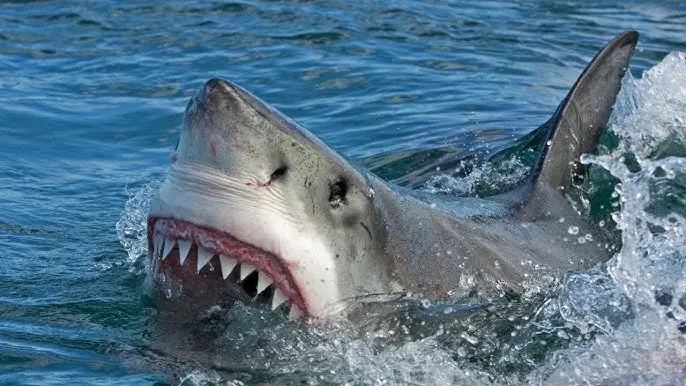
The once-silent realm of the deep has become a cacophony of human-made noise, with devastating consequences for great white sharks. Seismic surveys, using powerful airguns to search for oil and gas deposits, send shockwaves through the water that can deafen and disorient these apex predators. A study published in the journal Scientific Reports reveals that underwater noise pollution can increase stress hormones in sharks by up to 30%, potentially affecting their long-term health and reproductive success.
Dr. Christine Erbe, a marine bioacoustician at Curtin University, paints a grim picture: “Imagine trying to hunt in a nightclub. That’s essentially what we’re forcing these sharks to do.” The constant drone of shipping traffic adds to the underwater din, creating a blanket of sound that masks the natural acoustic cues sharks rely on to locate prey and avoid dangers. As our oceans grow louder, the great white’s reign as the silent hunter of the seas may be coming to an end.
10. Oxygen Depletion
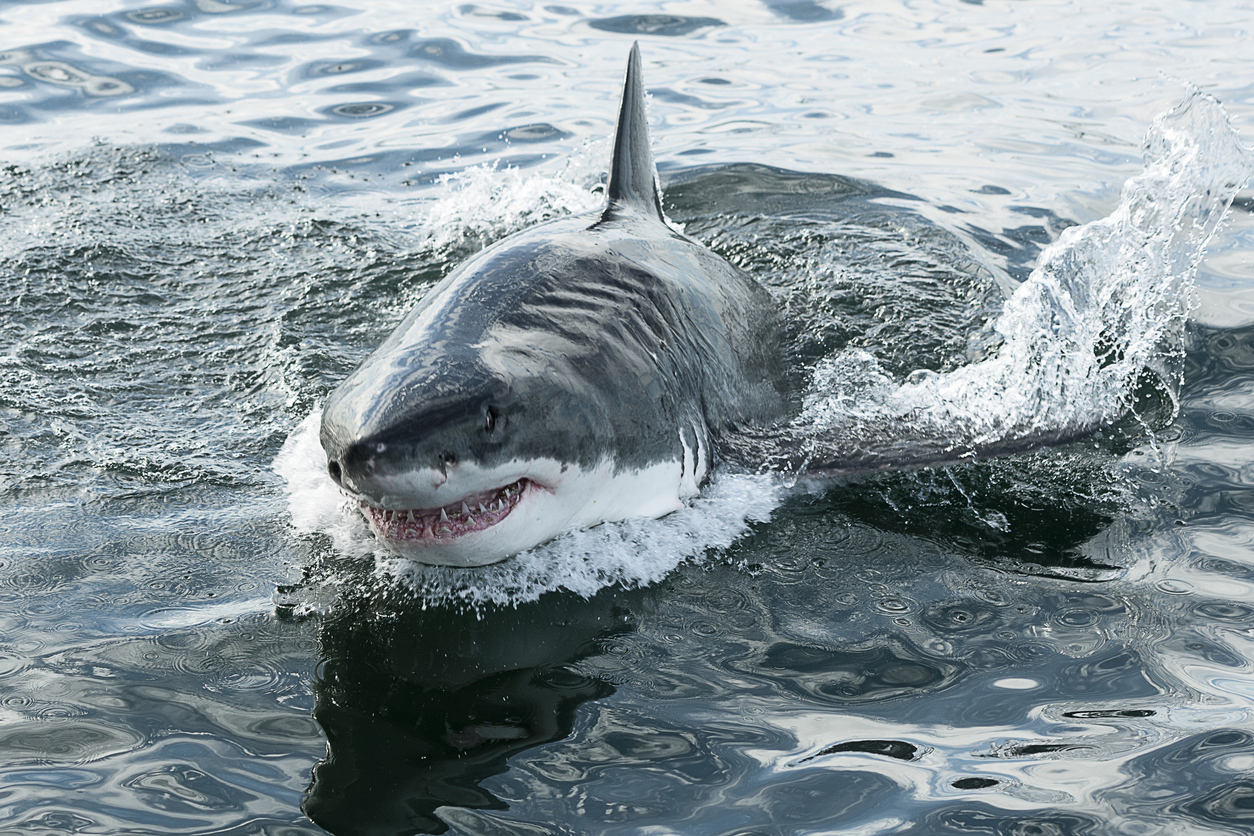
A silent killer is spreading through the world’s oceans – hypoxia. Vast “dead zones,” areas of water with little to no oxygen, are expanding at an alarming rate due to climate change and nutrient pollution. Great white sharks, requiring constant movement to breathe, find themselves trapped in these suffocating waters, forced to choose between staying and slowly dying or venturing into unfamiliar, potentially dangerous territories.
Dr. Barbara Block of Stanford University sounds the alarm: “The rapid expansion of oceanic dead zones, which have quadrupled in size since the 1950s, could force great whites into increasingly confined areas, intensifying competition and potentially leading to population collapses.” A study in the journal Science Advances found that some shark species can lose up to 95% of their habitat due to expanding low-oxygen zones. As these dead zones continue to grow, great whites face an invisible enemy they cannot outswim or outfight.
11. Plastic Menace
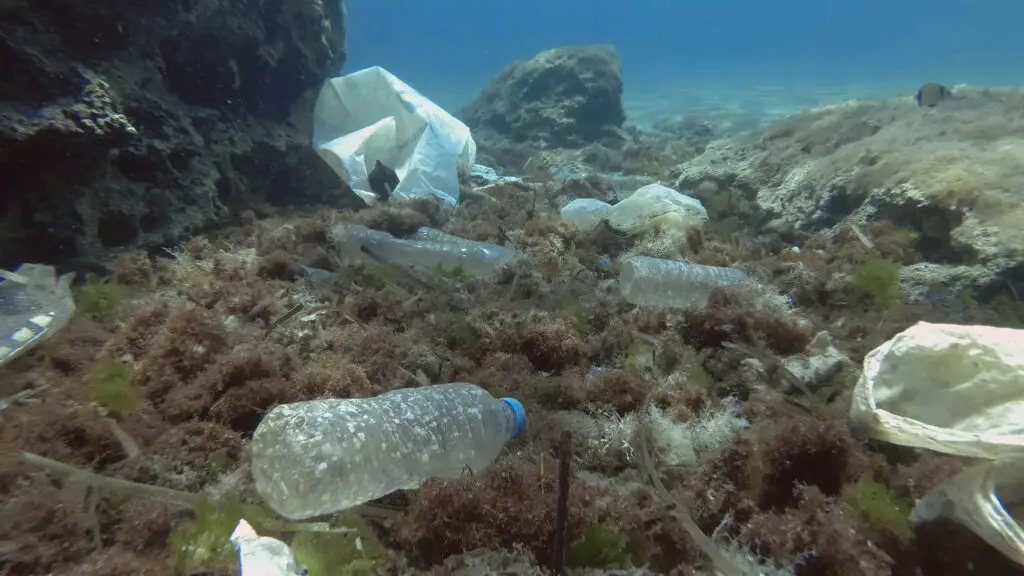
The world’s oceans have become a toxic soup of plastic waste, and great white sharks are unwittingly ingesting this man-made poison. A study published in the journal Marine Pollution Bulletin found that up to 25% of fish sampled in markets contained microplastics, suggesting that even the great white’s prey is contaminated. This creates a vicious cycle of plastic accumulation throughout the food web.
Dr. Chelsea Rochman, an ecologist at the University of Toronto, explains the insidious nature of this threat: “Microplastics act like sponges for other pollutants in the water. When sharks ingest these particles, they’re not just consuming plastic, but a cocktail of toxic chemicals.” The consequences are dire. Research has shown that plastic ingestion can lead to reduced fertility, impaired immune function, and even altered behavior in marine animals. As our plastic addiction continues unabated, great whites are silently choking on the debris of our disposable lifestyle.
12. Ocean Warming
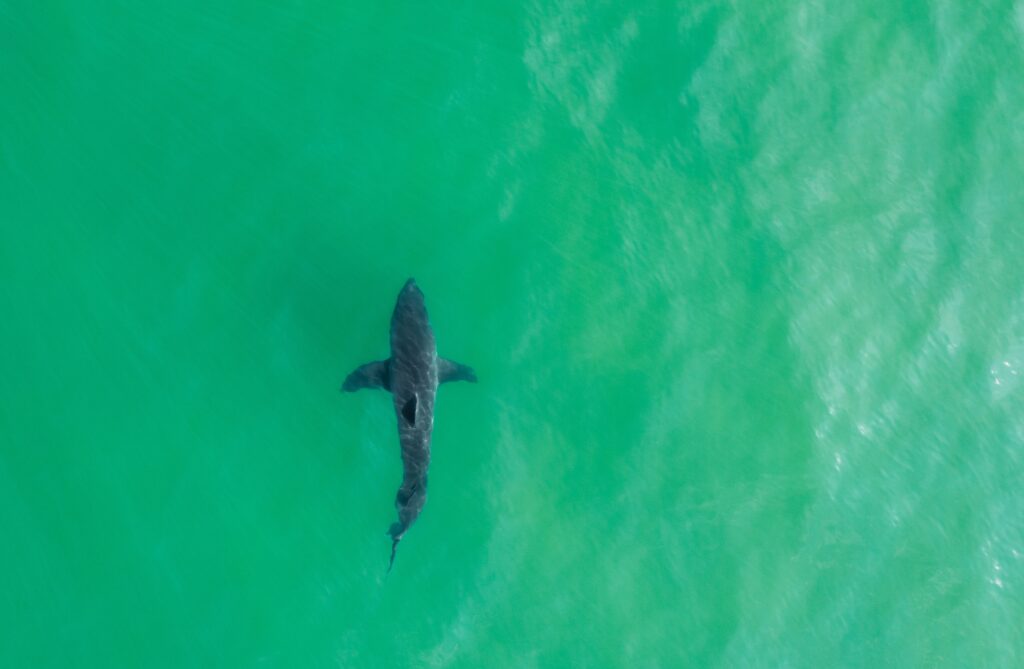
As climate change turns up the heat on our oceans, great white sharks find themselves in an increasingly hostile environment. These perfectly evolved predators, fine-tuned over millions of years, suddenly face waters too warm for comfort. A study published in the journal Global Change Biology found that for every 1°C increase in water temperature, shark metabolic rates increase by 10%, forcing them to hunt more frequently to meet their energy demands.
Dr. Nicholas Dulvy of Simon Fraser University paints a stark picture of the future: “If current warming trends continue, we could see a catastrophic collapse of great white populations in some regions within the next 50 years.” The rising temperatures not only stress the sharks directly but also cause their prey to shift their distributions. This mismatch between predator and prey could lead to ecological chaos, with far-reaching consequences for entire marine ecosystems.
13. Human Fear
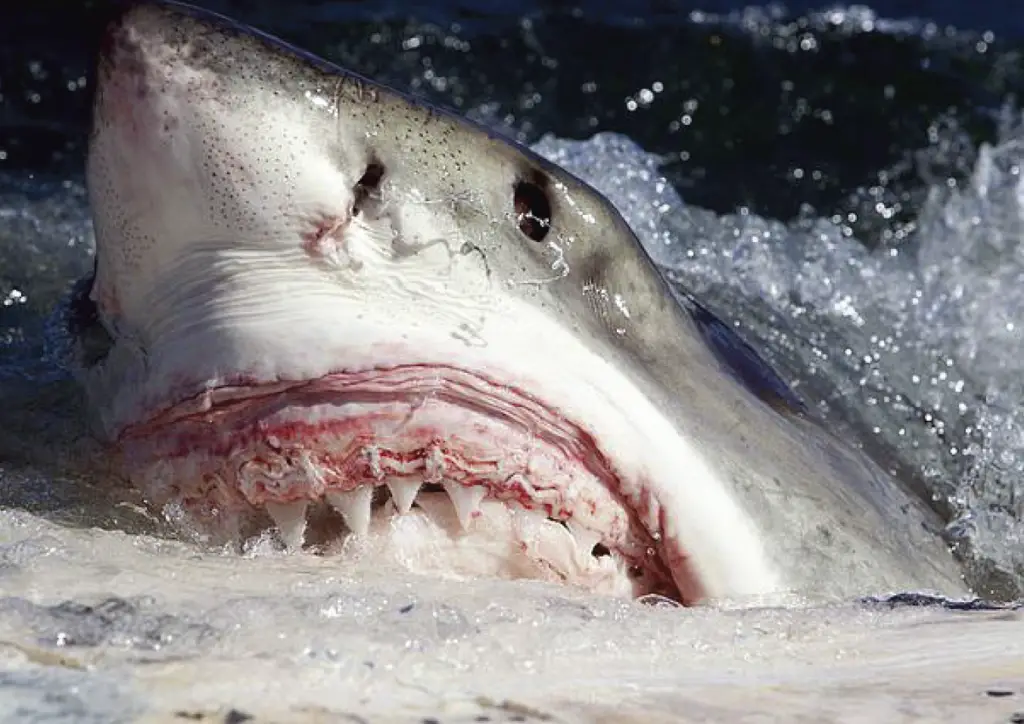
Perhaps the greatest threat to great white sharks lurks not in the water, but in the human mind. Decades of sensationalized media portrayals have painted these magnificent creatures as mindless killing machines. This irrational fear leads to devastating consequences when rare shark encounters occur. A study published in the journal Ocean & Coastal Management found that media coverage of shark attacks is disproportionately sensationalized, with up to 60% of articles using fear-inducing language.
Dr. Christopher Neff, a political scientist at the University of Sydney, explains the dangerous cycle: “Fear drives policy. When the public is afraid, they demand action, often in the form of culls or other lethal measures.” These knee-jerk reactions can have devastating effects on shark populations. A single cull in Western Australia in 2014 killed over 170 sharks, despite scientific evidence showing that culls do little to improve public safety. As long as fear trumps facts, great whites will continue to pay the price for our misplaced anxieties.
14. Bioaccumulation of Toxin
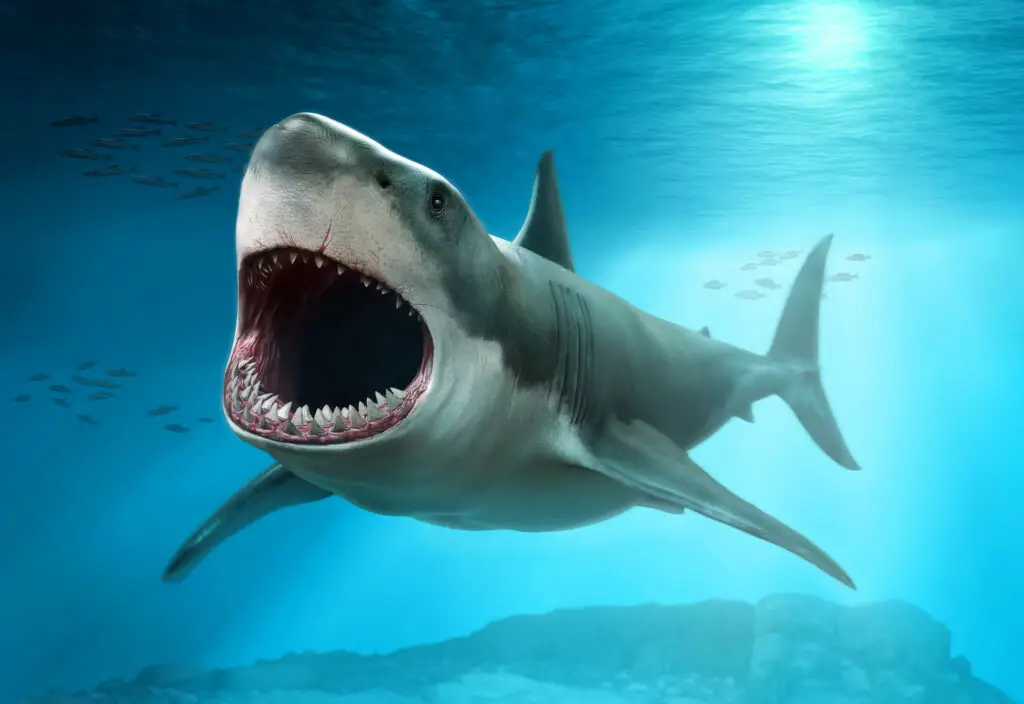
Lurking invisibly in the ocean’s depths, a silent killer is slowly poisoning the great white shark population. As apex predators, these majestic creatures are particularly vulnerable to the bioaccumulation of toxins in their bodies. Heavy metals, pesticides, and other pollutants that enter the marine food chain concentrate in ever-higher levels as they move up the food web, reaching their peak in top predators like great whites.
Dr. Neil Hammerschlag, a marine ecologist at the University of Miami, paints a grim picture: “Sharks accumulate staggering levels of mercury and other toxins over their long lifespans. This can lead to a host of issues, from reproductive failures to neurological problems, and in severe cases, death.” A groundbreaking study in the journal Science of the Total Environment found mercury levels in some shark species exceed limits considered safe for human consumption by up to 10 times. Dr. Kady Lyons, a researcher at the Georgia Aquarium, adds, “What we’re seeing is essentially a time bomb. These toxins can take years or even decades to manifest their full effects, potentially leading to population collapses that seem to come out of nowhere.” As industrial pollutants continue to seep into our oceans, great whites are silently bearing the toxic burden of our chemical-dependent world, their very flesh becoming a testament to the far-reaching impacts of marine pollution.
15. Shark-on-Shark Violence
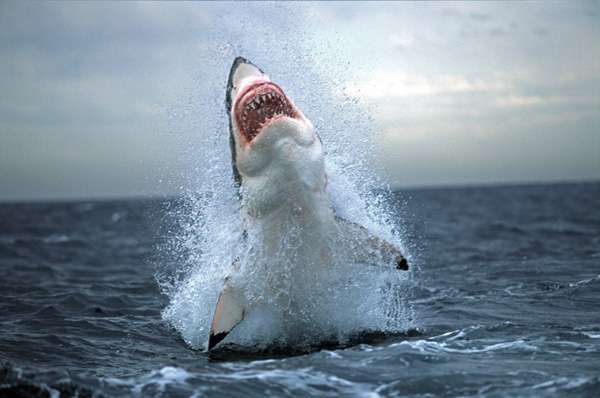
In the brutal world of apex predators, great white sharks face an unexpected threat: themselves. Cannibalism among these ocean giants is more common than previously thought. A groundbreaking study published in the journal Scientific Reports documented a 4.5-meter female great white shark attacking and partially consuming a 2.5-meter male off the coast of Australia.
Dr. Salvador Jorgensen, a researcher at the Monterey Bay Aquarium, explains the shocking behavior: “As their traditional prey becomes scarcer due to overfishing and climate change, great whites may be turning to cannibalism as a survival strategy.” This grim reality adds another layer of complexity to the challenges faced by great white populations. Intraspecies predation not only reduces population numbers directly but can also lead to altered behavior patterns and social structures among these typically solitary hunters.
16. Overfishing
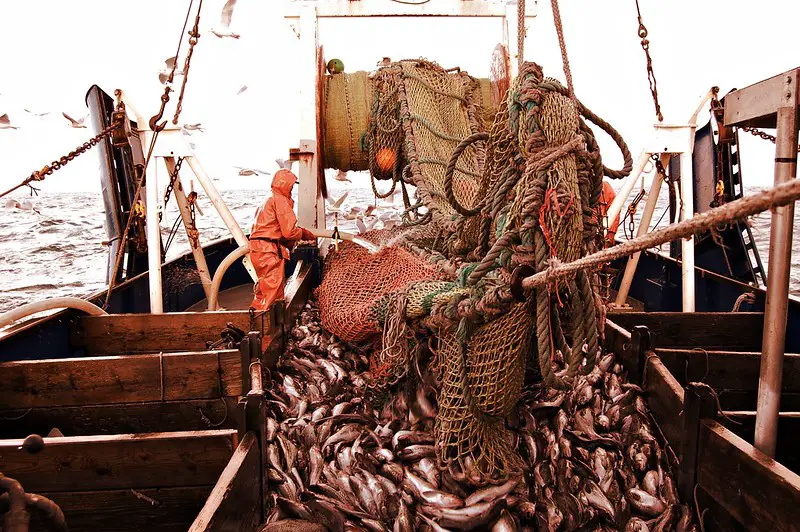
The relentless pursuit of seafood is draining the oceans of life, leaving great white sharks in a desperate struggle for survival. As commercial fishing operations deplete fish stocks at an alarming rate, these apex predators find their prey base dwindling, forcing them to venture into unfamiliar and often dangerous waters in search of food. The Food and Agriculture Organization (FAO) reports that over 33% of global fish stocks are being harvested at biologically unsustainable levels, creating a ripple effect that threatens entire marine ecosystems.
This depletion of prey species doesn’t just mean hunger for great whites; it fundamentally alters their behavior and migration patterns. A study published in Nature Communications found that overfishing has led to a 90% decline in some large predatory fish populations, forcing sharks to expand their hunting grounds and potentially increasing human-shark interactions. Dr. Boris Worm of Dalhousie University warns, “We’re not just taking fish out of the ocean; we’re dismantling the very food web that supports apex predators like great whites.” As the ocean’s larder empties, these magnificent hunters face an uncertain future, their fate intertwined with our insatiable appetite for seafood.
17. Vessel Strikes
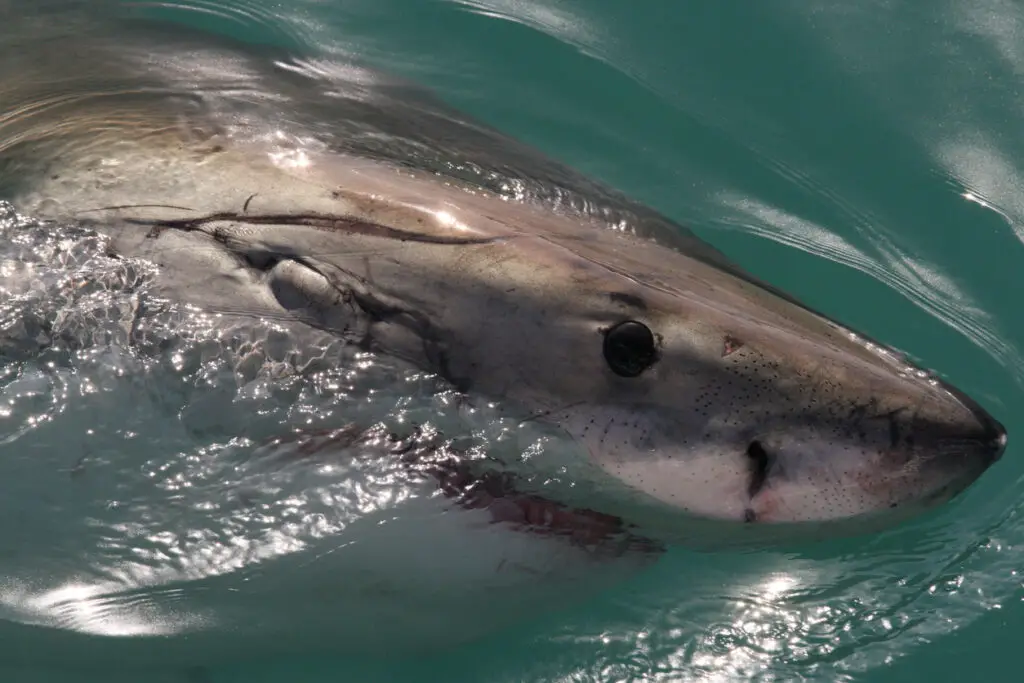
As humans increasingly encroach on marine habitats, great white sharks face a growing threat from an unexpected source – boat propellers. These silent killers slice through the water, often with devastating consequences for these ocean giants. A shocking video from 2024 captured a small watercraft accidentally colliding with a great white, highlighting the very real danger these encounters pose.
Dr. Lauren Meyer, a marine biologist at Flinders University, explains the gravity of the situation: “Boat strikes can cause severe injuries or even death to great whites. What’s particularly concerning is that areas with high boat traffic often overlap with critical shark habitats.” A study published in Marine Ecology Progress Series found that in some shark tourism hotspots, up to 28% of observed individuals bore scars from boat propellers. The Malibu Artist’s 2025 documentation of a great white with a severe propeller injury serves as a grim reminder of this growing threat. As ocean tourism and maritime traffic continue to increase, these majestic predators find themselves navigating an increasingly dangerous obstacle course of human activity.
As we’ve seen, the great white shark, once the undisputed apex predator of the oceans, now faces a gauntlet of threats that challenge its very existence. From the warming waters that alter its hunting grounds to the invisible menace of microplastics, from the brutal competition with orcas to the misguided fear that fuels human persecution, these magnificent creatures are fighting a multi-fronted battle for survival. The International Union for Conservation of Nature (IUCN) lists the great white shark as vulnerable, with some populations teetering on the brink of endangered status. As Dr. Christopher Lowe poignantly states, “We’re witnessing the potential twilight of one of the ocean’s most perfect predators, not through any fault of its own, but because of the cumulative impact of human activities.” The fate of the great white shark hangs in the balance, a stark reminder of the profound and often devastating impact we have on even the most fearsome creatures of the deep. Will we heed the warning signs and act to protect these misunderstood giants, or will we let them fade into the annals of natural history, another casualty of our changing world?


